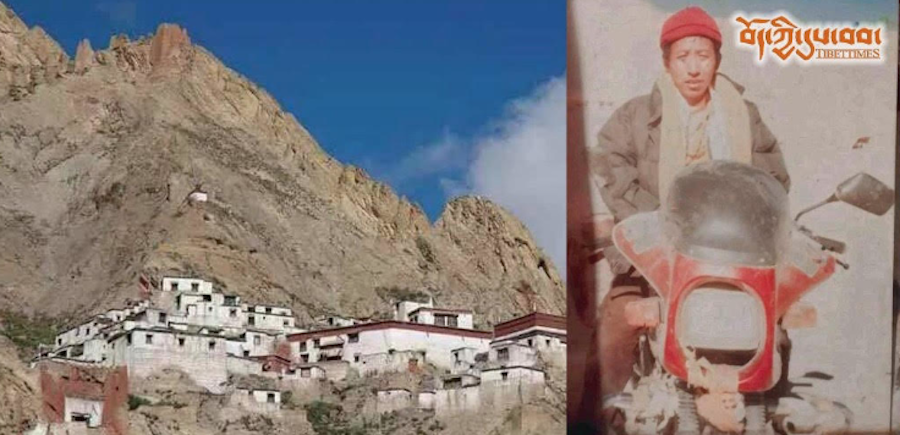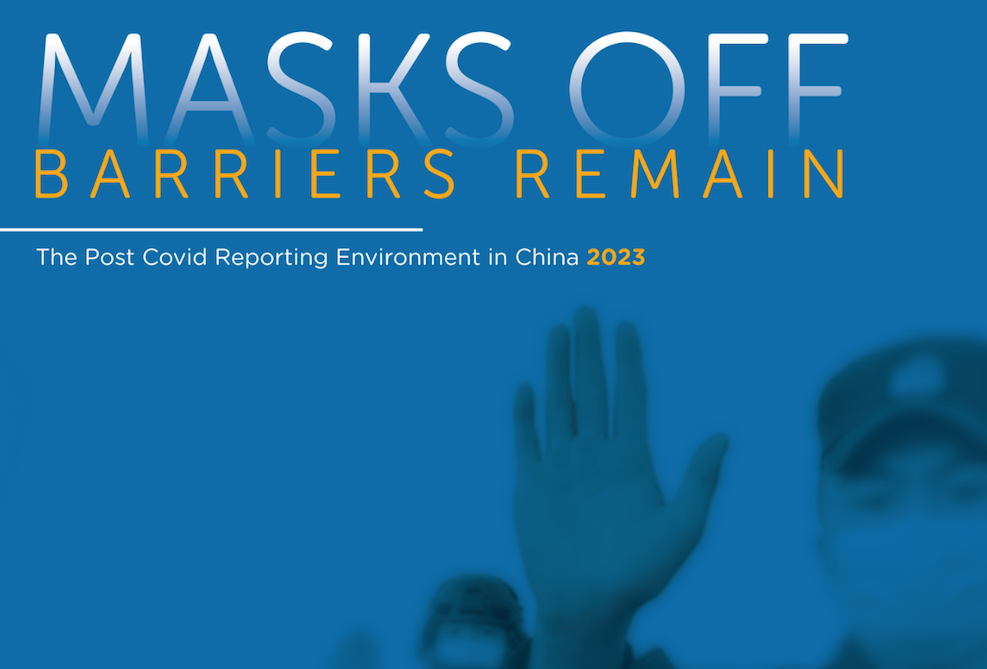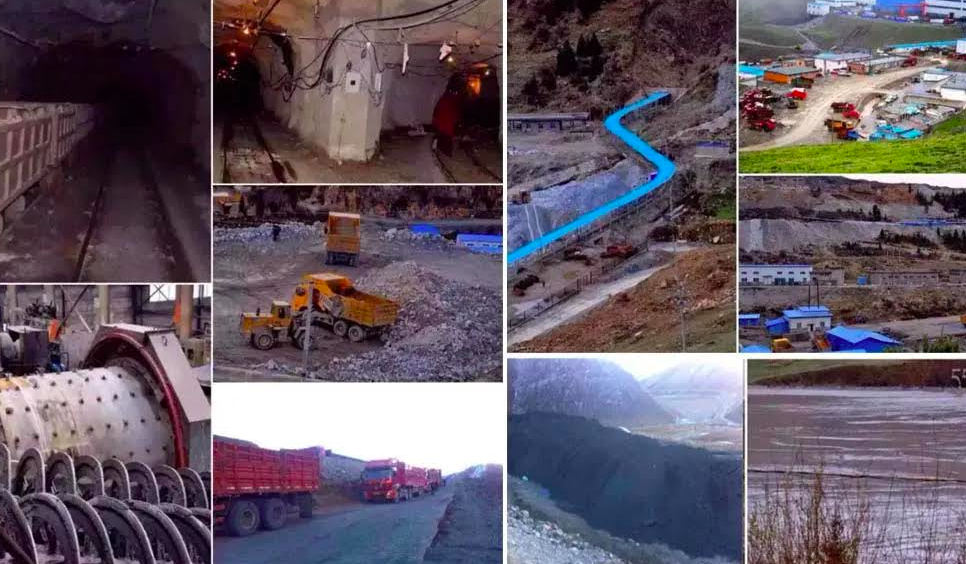by Kate Saunders
The imposition of Chinese urban and industrial models on traditional modes of production amongst Tibet¹s nomads is leading to increasing poverty and contributing to grassland degradation, according to the findings of recent surveys of nomadic communities carried out in eastern Tibetan areas. The implementation of Chinese policies of dividing up land, fencing pastoral land and settling nomads are well advanced in many areas of eastern Tibet, including the northern areas of Qinghai and parts of Gansu province, and have in some cases led to short-term increases in production. But serious concerns have been raised by Tibetan, Western and Chinese specialists about the lack of regard for the social and environmental consequences of the official policies.
The stated aims of the policies, which are in line with official policy on settling herders throughout China, are to improve the economic viability of animal husbandry and lessen the effects of natural disasters on the livelihood of Tibetan herdsmen. They also allow for greater administrative control over a population with fixed addresses.
The authorities¹ attempts to convert a pastoral way of life into an “efficient ranching enterprise” are based on the assumption that a change in land tenure will facilitate a shift from subsistence to market-oriented behaviour. But Camille Richard, a rangeland management specialist for the Kathmandu-based International Centre for Integrated Mountain Development (ICIMOD), says: “The behaviour and rationale of pastoralists are dictated first and foremost by an awareness of the realities of the marginal landscape in which they live, a landscape that has sustained their way of life for centuries. A rapid conversion to a new mode of thinking and living cannot take place without resulting in substantial socio-economic and ecological consequences.”
The implementation of settlement and land distribution policies, which began in the late 1980s, has been intensified under Beijing¹s current campaign to develop the western regions, including Tibet. The investment in pastoral areas under this campaign has been promoted under the “Four Sets” policy “a home with a roof, pasture with a fence, an enclosure for stock and man-planted grass”. An article in People¹s Daily last year claimed that more than 80% of nomads in Qinghai had “said farewell to nomadic life” (6 March 2002). These changes were described in the article as “heaven rolling and earth shaking”.
Changes “make families poorer”
A Tibetan from a nomadic family in the Machu (Chinese: Maqu) county in Kanlho (Chinese: Gannan) Tibetan Autonomous Prefecture in Gansu province, who has spoken to families in the area about the changes, said that the combination of divisions of land, settlement of nomads, and ranch-style grassland management are having a dramatic effect on the lives of all of the nomadic herders: “It is making families poorer and restricting their freedom. For instance, land is divided between families as if the population of that area will remain exactly the same. If a couple get married, often they have to share the land of their parents. The younger generation frequently has to wait until elderly relatives in their family pass away before they are entitled to land of their own. So often several people are sharing land allocated to just two people. In this way land distribution is having a very real impact on the number of children a nomad family has, and it effectively becomes another means of limiting the number of children in these areas.”
The Tibetan researcher also said that the distribution of land limits the amount of livestock a family can keep, so that there are fewer incentives to build up a larger herd in order to improve living standards. This appears to be the opposite of what the Chinese authorities are aiming to achieve, which is intensification of production and an increase in livestock. It is also difficult for Tibetan herders to find jobs elsewhere, due to competition from more skilled Chinese in many areas, or to start up enterprise. “To start up a business, they need good connections and capital, and often an uneducated nomad who has been living on the land has neither,” he said.
Chinese officials and scientists frequently attribute grasslands degradation in Tibetan areas to the “unsophisticated” and “backward” practices of Tibetan nomads. This perception, which focuses solely on the importance of economic development and depicts the rangelands as simply a resource to sustain livestock, leads to the marginalisation of expert Tibetan views on the management of the grasslands and does not take into account the values of indigenous pastoralists.
Daniel Miller, a rangelands specialist who has worked in Tibet for more than a decade, says: “The fact that numerous, prosperous pastoral groups remain [in Tibet] to this day bears witness to the extraordinary knowledge and animal husbandry skills of the herders. [This is a demonstration] of the rationality and efficacy of many aspects of traditional pastoral production as a means to convert [?] rangelands into valuable animal products in an environment where cultivated agriculture is not possible. Nomads should be considered as ?experts¹ even though they may be illiterate. Some old Tibetan herders have probably already forgotten more details about rangelands and yaks than many young scientists will ever learn. Tibetan pastoralists offer an opportunity to learn more about a way of life that is fast vanishing from the earth.” (Rangeland management in the Hindu Kush Himalayas: Himalayan and Tibetan Pastoralism, published on the website of the International Centre for Integrated Mountain Development at: www.icimod.org) .
Miller says that the ecological knowledge and animal husbandry skills of nomads are often not well recognised by scientists and development planners working in Tibetan areas. As a result, herders have often been left out of the development process, with neither their knowledge nor their needs being considered by the authorities in the introduction of more “modern” and “scientific” methods of livestock production. Chinese researcher Wu Ning, from the Chengdu Institute of Biology, the Chinese Academy of Science, in Sichuan, says that there is a clear need to raise public awareness concerning nomads’ indigenous knowledge systems in the conservation of biodiversity and sustainable use of natural resources. Wu Ning writes in a paper on biodiversity in Sichuan: “The indigenous knowledge of nomads should be scientifically investigated so that they can be integrated in the practical planning and implementation of development projects.” (Man’s Impacts on Biodiversity in Tibetan Nomadic Societies of Western Sichuan by Wu Ning is one of a collection of papers on issues affecting Tibetan nomads published on the website for The Centre for Research on Tibet, http://www.cwru.edu/affil/tibet/nomadpapers.html ).
Mobility of livestock and erosion of the grasslands
According to grasslands specialists, livestock must be mobile to prevent degradation of the environment and to maintain rangeland health, the basis of extensive grazing systems throughout the world. The harsher the environment, the further the herders must move to acquire forage for livestock. Fencing of land can prevent this mobility among livestock, leading to degradation of the grasslands. Wu Ning writes in his paper on biodiversity: “There is the principal requirement to ensure the maximum possible geographical mobility for nomads, because the dispersal of animals limits the pressure of grazing on any one pasture at one time and is the only way of guaranteeing the greatest degree of conservation of biodiversity.”
A study by the International Centre for Integrated Mountain Development on the impact of China¹s Grassland Law (formulated in the mid-1980s) on eastern Tibet¹s grasslands found that in some areas, where fencing is used for reserve pastures, livestock mortality has been reduced. It also found that some families have better access to veterinary care and other services. But it also found that there is a poor allocation of pastures in many areas, with some receiving good quality land and others receiving poor land, often with a lack of access to water supplies. ICOMOD reports that in general little effort has been made to monitor the impacts of these policies on either the environment or people most affected.
Although the ICOMOD research concludes that the new policies have resulted in reduced labour for herder households overall, the strong gender division of labour in most nomadic households means that this outcome can be damaging to family life. The Tibetan researcher said: “The land division has definitely affected family relationships. In nomad families, women traditionally do a lot of the hard work close to home milking yaks, making butter and cheese, while men had a clearly defined role looking after the livestock and moving the animals from different pastures. Now the responsibility of the male herders has been taken away, which is leading to many social problems. Many of them just go to the towns and get drunk or play cards all day. Usually it¹s difficult for them to find other work, and they need good connections to start a business of their own.”
In some areas, including Machu county in Gansu, poorer households are allowed to combine their pastures, which cuts costs for the individual households, but in areas where households are not allowed to combine their land, such as in Kakhog (Chinese: Hongyuan) county in Ngaba, Sichuan, more economic hardship and reduction of herds can result. The system of grassland management in Tibetan areas allows for a degree of flexibility incorporating a community-based approach, according to research by two Chinese specialists, Li Ping, the representative in Beijing of the Seattle-based Rural Development Institute and Yan Zhaoli, a researcher from the Chengdu Institute of Biology in Sichuan, together with Camille Richard and Tony Banks, a lecturer from Massey University in New Zealand. Following field research in Sichuan, Yunnan and the TAR, the researchers concluded that schemes such as collective and small group tenure of land managed by the community were advantageous to nomads. They found that community-based management can facilitate equal access to pastoral resources, the mitigation of environmental risk, and the prompt resolution of grassland-related disputes. Although Chinese grassland policy emphasises the tenure and management of land on an individual household basis, the researchers argued for a more flexible approach to policy implementation – stating that China¹s revised Grassland Law (2003) arguably provides legal space for these alternative models. (Community-based Grassland Management in Western China: Rationale, Pilot Project Experience and Policy Implications, paper to be published in May).
Formless barriers between the cadres and the masses
Varying claims have been made in the Chinese press regarding the extent of settlement of nomads. It is possible that some of the statistics given claiming extremely high rates of settlement of herders are not entirely accurate but are aimed at creating an impression of the success of policy implementation to the authorities at a higher level, or donor provinces who have funded aspects of the western development programme. In some areas, nomadic families do have a house, and hence could be counted as “settled”, but this does not mean they have given up their nomadic life they may still have summer pastures which are often several days walk from winter ones. In one unusual report last year, Xinhua referred to the lack of success of the settlement policy in Ngari (Chinese: Ali) prefecture in the TAR, stating the following: “Within the prefecture, there is only an average of 0.2 people per square kilometre, nomad settlements are scattered, communications are inconvenient, and a good many nomads have not yet settled which has created formless barriers between the cadres and the masses” (27 September 2002).
Settlement policies and urbanisation are being implemented in the Tibet Autonomous Region (TAR), where schemes to move herders from the mountains into the towns have been carried out. As of April 2002, more than 1,500 peasants and herders were moved to small towns created by the authorities along important communications routes in Linzhi (Nyingtri) prefecture, according to Xinhua (21 April 2002). The policies affecting Tibetan nomads in the TAR are linked to aims of urbanisation in the region and the development of centres for the processing, distribution and sale of animal husbandry goods. A Xinhua report this week (7 April) announced the launch of the TAR¹s largest agricultural and animal husbandry programme, with a budget of 329 million yuan ($39.6 million) by the end of 2005. The programme involved the improvement of natural grasslands, the establishment of breeding centres, and the settlement of nomads in 19 counties.
Rangelands specialist Daniel Miller says that the overall effects of the lack of concern for pastoral areas and misconceptions regarding rangelands and pastoral production systems in Tibet today are a general downward spiral in the productivity of many areas, loss of biodiversity, and increased marginalisation of herders. He says: “Nomads and their pastoral systems have always been confronted with events that change their lives droughts that wither grass, winter storms and livestock epidemics that wipe out herds, and tribal wars that displace people and their animals but the changes nomads are facing today on Himalayan and Tibetan rangelands are more profound and likely to have more significant, long-term implications on their way of life and the ecosystems in which they reside than any previous changes.”









